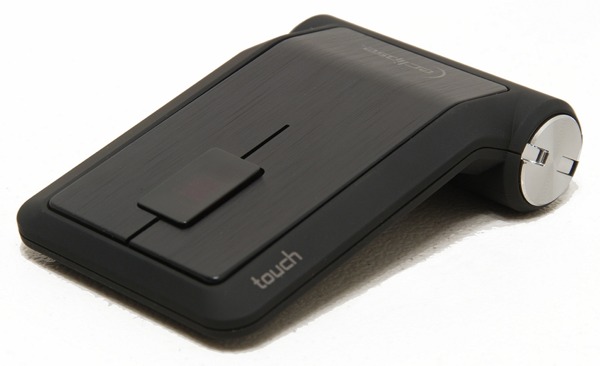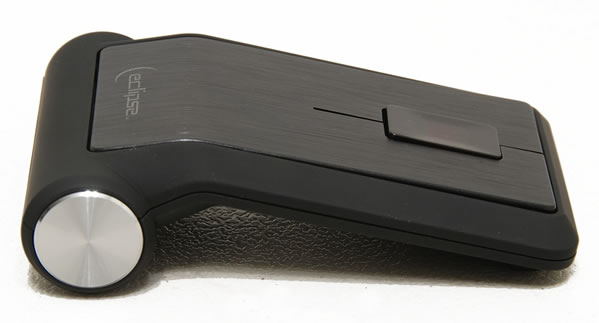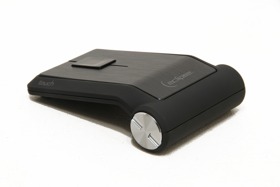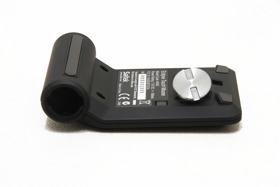When it comes to input peripherals and more specifically pointing devices, the options available to the end user are near limitless. Our most recent mouse reviews and roundups have had a heavy focus on gamers and enthusiasts, but it's important to remember that not everyone falls into these particular demographics.
Today we'll be looking at three mice that aren't necessarily as high-end or feature-packed as some we have previously tested. These wireless mice are smaller and simpler in what they entail, yet they all feature one distinct characteristic - touch sensitivity.
Meet the contenders: Microsoft's Arc Touch, Mad Catz's Eclipse touchmouse, and SpeedLink's Cue Wireless Multitouch.

Although all three could easily be used as full-time desktop mice, I suspect most would categorize them as on-the-go laptop companions based on their small footprint and wireless connectivity.
Mad Catz Eclipse touchmouse
The Eclipse touchmouse is a small Bluetooth 2.0- enabled mouse that features a brushed aluminum finish across the top with a soft black rubber-type material around the sides and bottom. Input is provided by traditional left and right mouse click buttons but the scroll wheel has been replaced with a 4-way touch scroll pad.
The touch scroll pad operates much like a regular scroll wheel would. Slide your finger up and down the length of the pad to scroll up and down on-screen. Additionally, you can scroll side to side to produce the same effect horizontally.
The touch pad is also clickable and offers gesture commands in each of the four directions when depressed. Holding the touch pad down and moving up opens a new browser window. Swiping left navigates you back a page, right moves you forward and a downward gesture refreshes the current active page. I'm not one to really take advantage of touchpad gestures on a notebook, but the gesture system on the Eclipse was very useful and I found myself using it more often than not.

On the bottom of the Eclipse are two small feet and one large one that spans the width of the mouse. The 1600 DPI laser is positioned near the top of the mouse and there is a tiny LED activity light and a connection button on the right side midway down.
The single AA battery tucks away in the bottom of the mouse and can be installed by unscrewing the left-side silver cap. The single battery configuration differs from the other two mice we have on hand which use two AAA batteries for power.
Also bundled with the mouse is a quick user guide in multiple languages and a driver disc. Noticeably missing is a Bluetooth receiver, meaning you can only use this mouse if your system has built-in Bluetooth or you supply your own receiver.
To pair the Eclipse with your Bluetooth-enabled computer, press the small button on the bottom of the mouse once to turn it on. Then hold it for three seconds to enable pairing mode. Go into your Bluetooth manager on the PC and search for the device to pair the two together. The mouse is true plug-and-play, so you don't have to use the included software if you want. This is nice but limits how much control you have over the device. The supplied software is very basic and only allows you to adjust lines per scroll notch and scroll speed.

As a notebook companion, the Eclipse does the job and the gestures are a nice touch, but aside from that I wasn't terribly impressed. The mouse is very light - almost to the point of feeling cheaply built. This combined with the small footprint and unique design didn't make it very comfortable to use.
The touch scroll pad was hit or miss in the scroll department. Sometimes it would scroll relatively smoothly, other times it was jumpy.
When testing the range of Bluetooth for HTPC applications, the Eclipse touchmouse didn't perform well. At a range of 6' or more, the mouse cursor was very jumpy on-screen. Moving back further to around 15', it became borderline unusable. Bluetooth has a range of 30', so this shouldn't have been an issue.


This issue could be credited to the mouse or the receiver built into the notebook I was using (Lenovo IdeaPad U260). If it's the notebook, you still have to point the finger at Eclipse for not including a receiver to use with the mouse.
The Eclipse touchmouse is available for about $48. Although the mouse looks very modern and would be easy to travel with, we believe there are better options available if you want some touch features on your mouse.
Pros:
|
Cons:
|